11 Weeds With Purple Flowers | Common Lawn Weeds & Hidden Gems in Your Yard

This post follows our research editorial guidelines.

Wildflowers often get a bad reputation, If you’re a homeowner or gardener, you’ve likely come across one of the purple flowers and thought is this a weed?
These low-maintenance weeds add a pop of color to your garden when you least expect it. This violet below looks like any other common lawn weed but given enough time blooms these vibrant purple flowers. I’ve put together my now-mow list of purple flowering weeds worth keeping around this year.
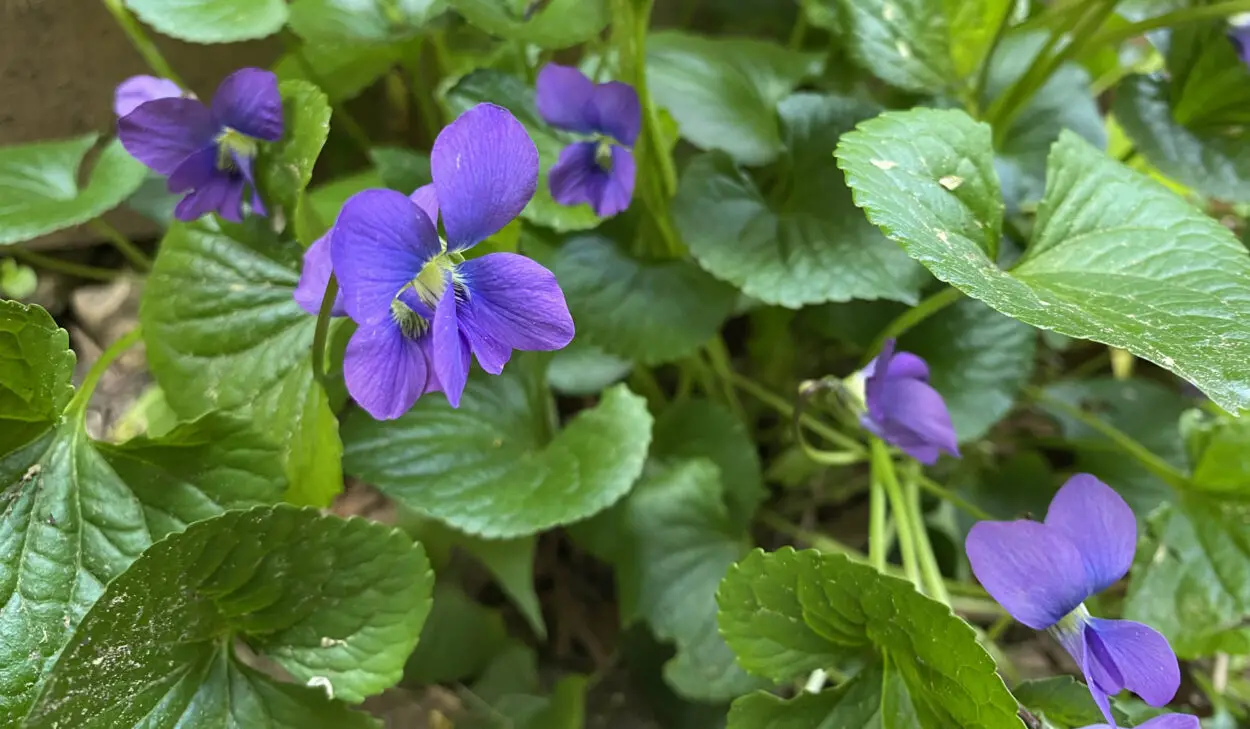
Quickly Find Purple Weeds
So, let’s take a look at my favorite weeds with purple flowers and explore their characteristics, growth habits, and potential benefits in the growing guides I’ve included for each.
From the fast-spreading Purple Dead Nettle to the slow-growing Wild Violet, these purple-flowered weeds are sure to catch your eye and maybe even earn a spot in your lawn’s ecosystem.
1. Purple Dead Nettle (Lamium purpureum)

Purple Dead Nettle may be considered a weed, but it actually has some surprising benefits. For one, it’s a great source of early-season nectar for bees and other pollinators, making it a valuable addition to any low-light garden or yard.
And because it’s a fast-growing and hardy plant, it can help prevent soil erosion and improve the overall health of your yard’s ecosystem.
| Botanical Name: | Lamium purpureum |
| Growth Rate: | Fast-spreading |
| Native Range: | Europe, Asia |
| Hardiness Zones: | 4-8 |
| Exposure: | Full sun to partial shade |
| Soil Needs: | Moist |
| Water needs: | Moderate |
2. Wild Violet (Viola sororia)
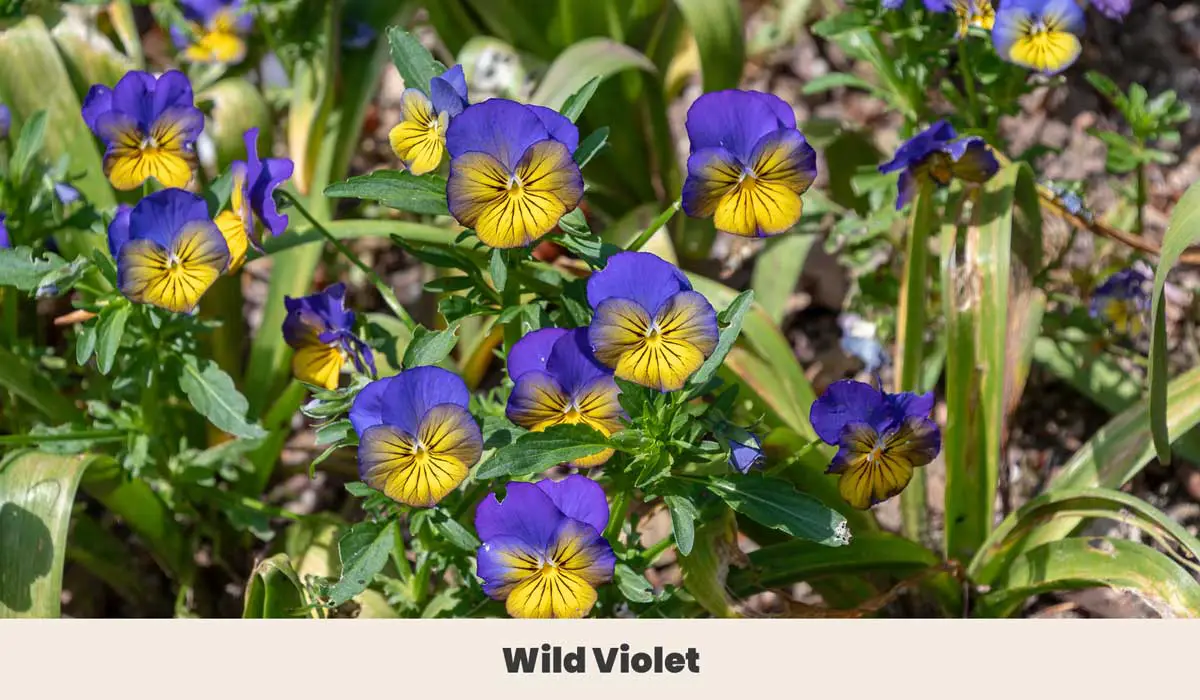
Wild violets (Viola sororia) are small, low-growing perennial plants with heart-shaped leaves and delicate, five-petaled flowers that range in color from white to deep purple.
They are native to North America and can be found in a variety of habitats, including lawns, meadows, and woodland edges.
While some people consider them to be weeds, wild violets are also valued for their beauty and the fact that they serve as an important source of early-season nectar for bees and other pollinators.
| Botanical Name: | Viola sororia |
| Growth Rate: | Slow-spreading |
| Native Range: | North America |
| Hardiness Zones: | 3-8 |
| Exposure: | Shade to part sun |
| Soil Needs: | Moist, well-drained |
| Tolerate: | Shade |
| Water needs: | Moderate |
Are Wild Violets Edible?
Yes, wild violets (Viola sororia) are edible and have been used in cooking and herbal remedies for centuries.
The leaves and flowers of the plant have a mild, slightly sweet flavor and can be eaten raw in salads or cooked as a vegetable. They are rich in vitamins A and C and other nutrients.
3. Henbit (Lamium amplexicaule)
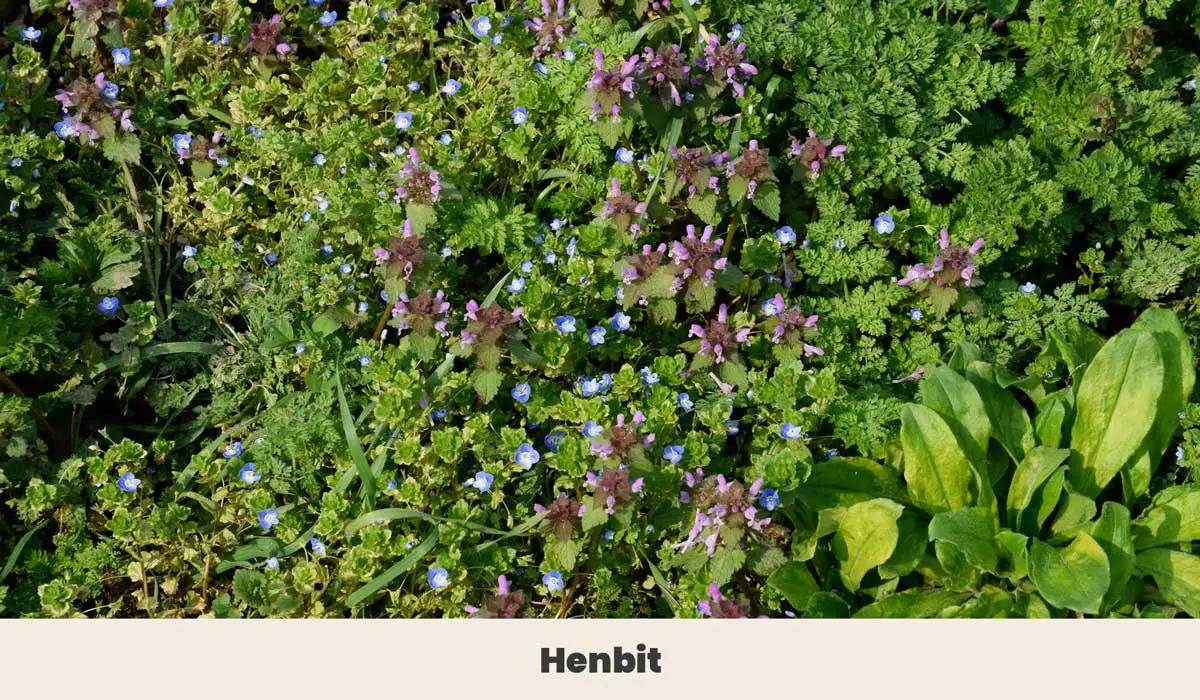
Henbit (Lamium amplexicaule) is a cool-season annual weed that belongs to the mint family. It is characterized by its purple-pink flowers and toothed, rounded leaves with a scalloped edge.
Henbit is commonly found in lawns, gardens, and other disturbed areas, and it can be easily identified by its square stem and opposite leaf arrangement.
| Botanical Name: | Lamium amplexicaule |
| Growth Rate: | Fast-spreading |
| Native Range: | Europe, Asia |
| Hardiness Zones: | 3-8 |
| Exposure: | Full sun to partial shade |
| Soil Needs: | Moist |
| Tolerate: | Drought tolerant |
| Water needs: | Moderate |
Is Henbit Edible?
Yes, Henbit (Lamium amplexicaule) is edible. The leaves and flowers of the plant are edible and have been used in salads, soups, and teas.
However, like with any wild plant, it’s important to properly identify it and avoid consuming any that have been sprayed with pesticides or grown in contaminated soil. It’s also recommended to consume henbit in moderation, as large quantities may cause digestive issues.
4. Ground Ivy – Creeping Charlie (Glechoma hederacea)
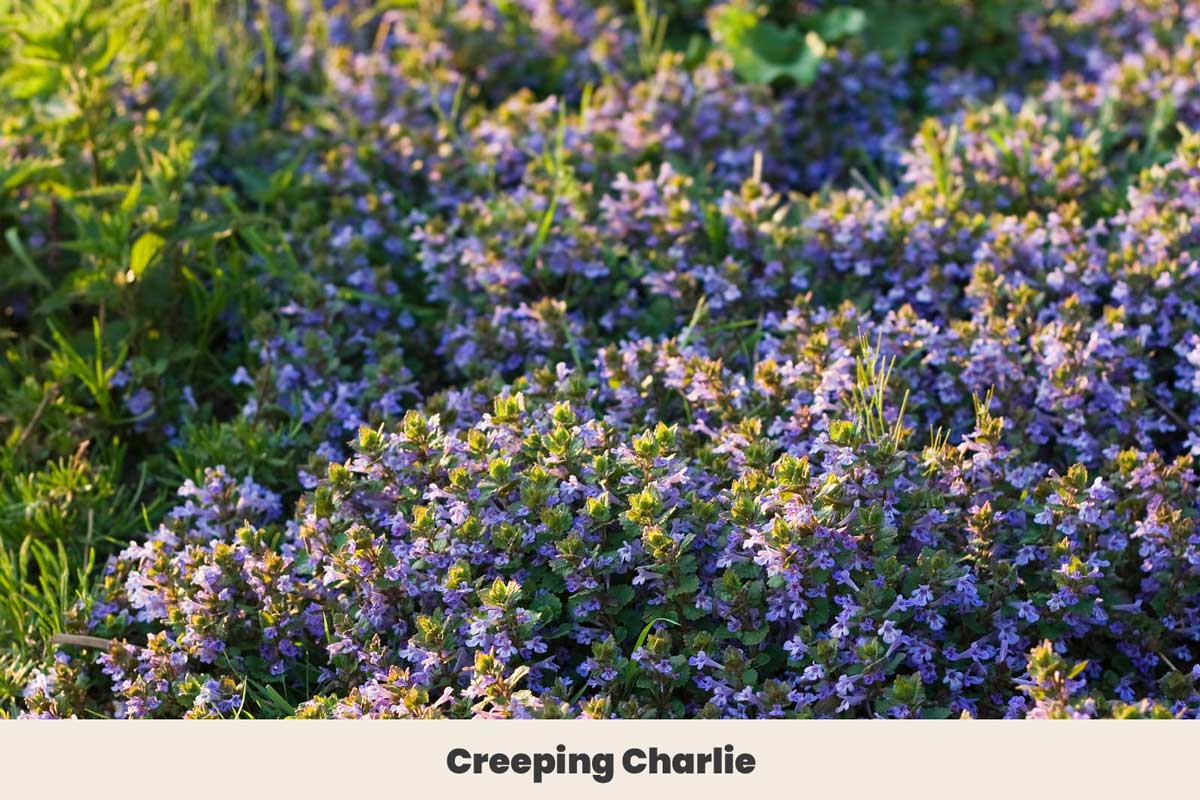
Ground Ivy, also known as Creeping Charlie, is a creeping perennial ground cover that belongs to the mint family. It has round to kidney-shaped leaves with scalloped edges and produces small bluish-purple flowers in the spring.
It is commonly found in lawns, gardens, and along roadsides, and is known for its aggressive spreading habit.
| Botanical Name: | Glechoma hederacea |
| Growth Rate: | Rapid-spreading |
| Native Range: | Europe, Asia |
| Hardiness Zones: | 4-9 |
| Exposure: | Partial shade |
| Soil Needs: | Moist |
| Tolerate: | Foot traffic tolerant |
| Water needs: | High |
5. Creeping Thistle (Cirsium arvense)

Creeping thistle (Cirsium arvense) is a perennial herbaceous plant that is considered a noxious weed in many parts of the world.
It is native to Europe and Asia and was introduced to North America and other regions as a contaminant of seed shipments.
Creeping thistle grows up to 6 feet tall and spreads through underground roots, called rhizomes, which can quickly form dense colonies. The plant has spiny leaves and produces purple or pink flowers that bloom from midsummer to early fall.
| Botanical Name: | Cirsium Arvense |
| Growth Rate: | Fast-spreading |
| Native Range: | Eurasia |
| Hardiness Zones: | 3-9 |
| Exposure: | Full sun |
| Soil Needs: | Any |
| Tolerate: | Drought tolerant |
| Water needs: | Low |
6. Dove’s-Foot Crane’s-Bill (Geranium molle)
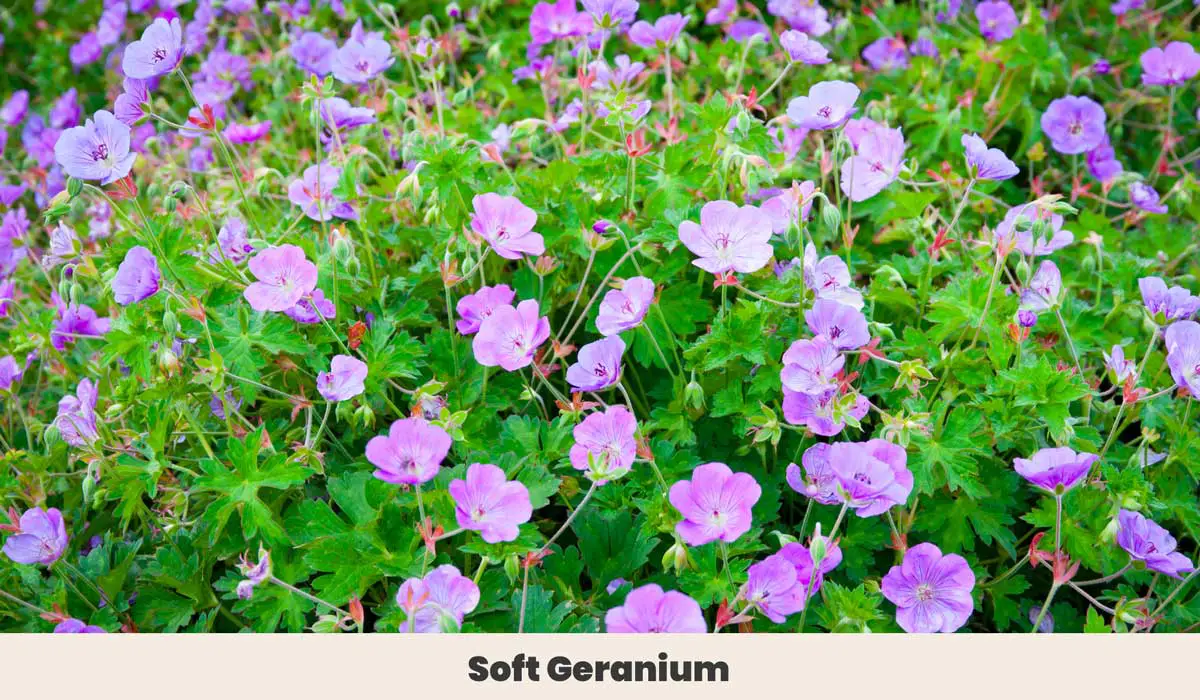
Dove’s-foot crane’s-bill (Geranium molle) is a low-growing perennial plant that is native to Europe but has been introduced to many other parts of the world, including North America.
It is commonly found in lawns, gardens, and waste areas, and is known for its small, pinkish-purple flowers and deeply lobed leaves.
The plant is also sometimes called “soft geranium” because of its velvety texture. Dove’s-foot crane’s-bill is often considered a weed in lawns and gardens, but it can also be grown as an ornamental plant in rock gardens and other naturalistic settings.
| Botanical Name: | Geranium molle |
| Growth Rate: | Moderate |
| Native Range: | Europe, Asia, North America |
| Hardiness Zones: | 3-8 |
| Exposure: | Full sun to partial shade |
| Soil Needs: | Well-drained |
| Tolerate: | Drought, deer tolerant |
| Water needs: | Moderate |
7. Selfheal or Healall (Prunella vulgaris)
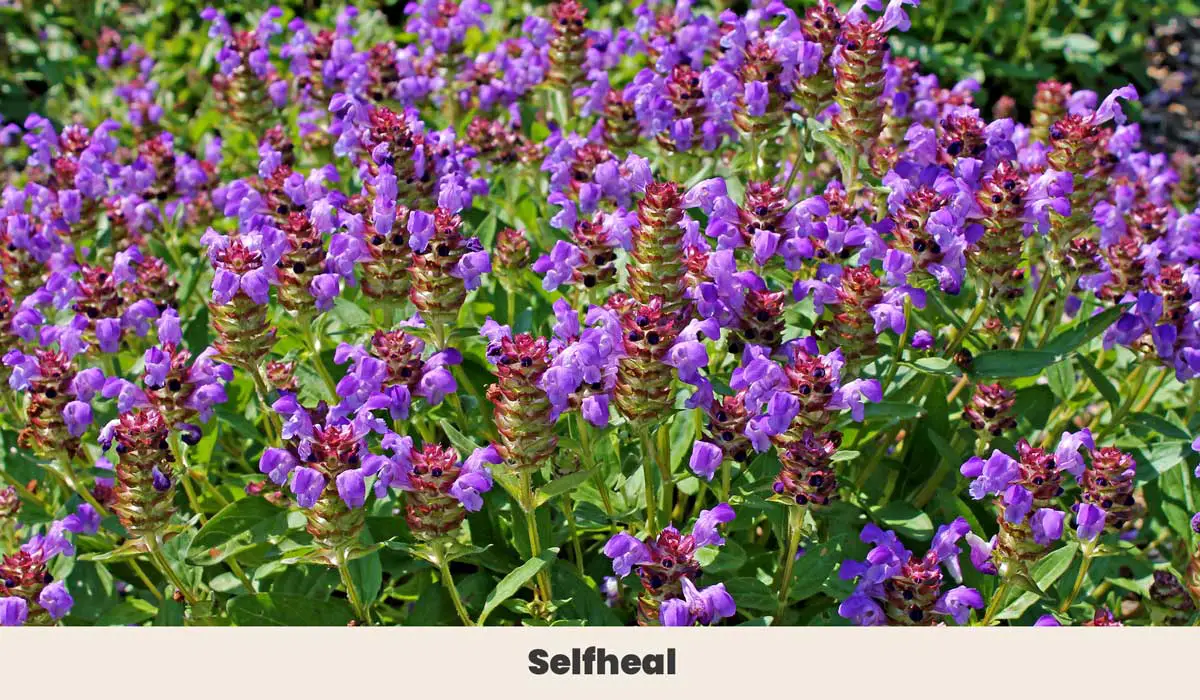
Selfheal or Healall (Prunella vulgaris) is a herbaceous perennial plant that belongs to the mint family (Lamiaceae). The plant has a square stem with opposite leaves and produces small, purple-pink flowers in dense spikes.
| Botanical Name: | Prunella vulgaris |
| Growth Rate: | Moderate |
| Native Range: | Europe, Asia |
| Hardiness Zones: | 4-8 |
| Exposure: | Full sun to partial shade |
| Soil Needs: | Well-drained |
| Tolerate: | Poor Soil |
| Water needs: | Low |
8. Bittersweet Nightshade (Solanum dulcamara)
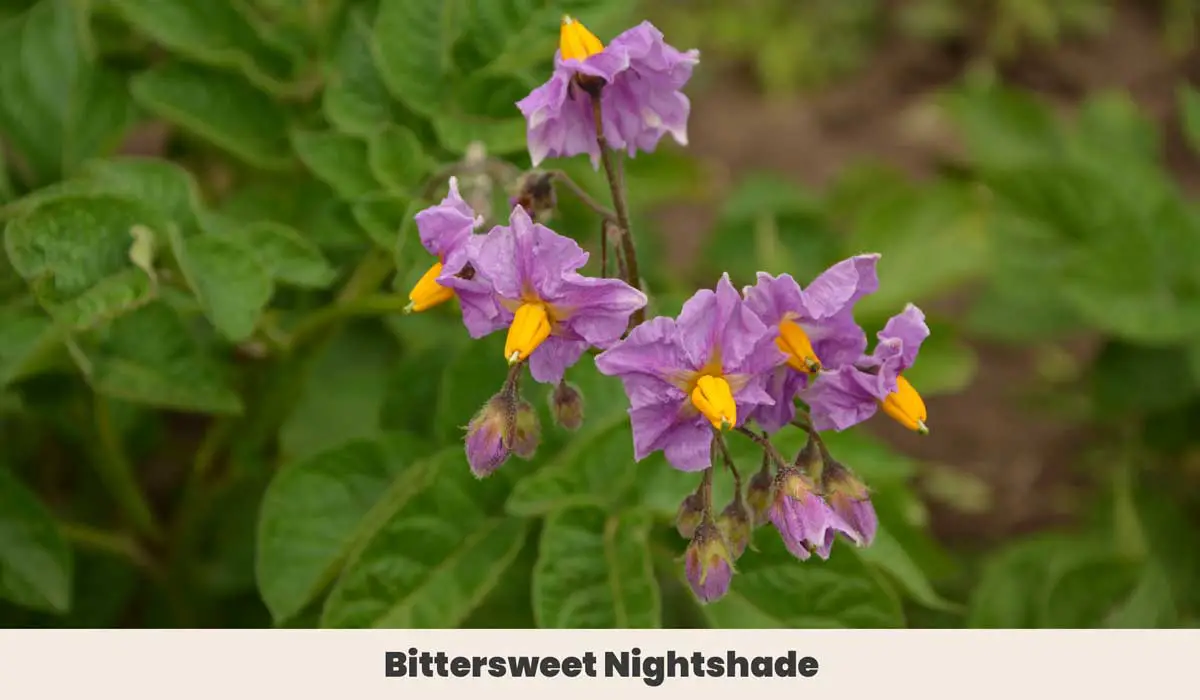
Bittersweet nightshade (Solanum dulcamara) is a vine-like plant that belongs to the nightshade family. The plant has purple flowers that bloom from May to September and bright red, egg-shaped berries that ripen in the fall.
| Botanical Name: | Solanum dulcamara |
| Growth Rate: | Fast |
| Native Range: | Europe, Asia |
| Hardiness Zones: | 3-9 |
| Exposure: | Full sun to partial shade |
| Soil Needs: | Moist, well-drained |
| Tolerate: | Poor soil tolerant |
| Water needs: | Moderate |
9. Common Burdock (Arctium minus)

Common burdock (Arctium minus) is a biennial plant in the Asteraceae family. The plant has large, heart-shaped leaves and produces purple flowers that develop into burrs with hooked bracts.
The plant can also be invasive and difficult to control, and it is considered a noxious weed in some areas.
| Botanical Name: | Arctium minus |
| Growth Rate: | fast |
| Native Range: | Eurasia, Africa |
| Hardiness Zones: | 3-9 |
| Exposure: | Full sun to partial shade |
| Soil Needs: | Well-drained |
| Tolerate: | Poor soil tolerant |
| Water needs: | Moderate |
10. Bird Vetch (Vicia cracca)

Bird Vetch (Vicia cracca) is a perennial plant species belonging to the pea family Fabaceae. It is a climbing and trailing vine with slender stems that can reach up to 1-2 meters in length.
The plant has compound leaves with 10-12 pairs of small leaflets and produces showy purple-blue flowers in clusters along the stem during the summer months.
While it is often considered a weed, it can also be used as a forage crop for livestock or as a nitrogen-fixing cover crop in agriculture.
| Botanical Name: | Vicia cracca |
| Growth Rate: | Fast |
| Native Range: | Eurasia, Africa |
| Hardiness Zones: | 3-8 |
| Exposure: | Full sun to partial shade |
| Soil Needs: | Well-drained |
| Tolerate: | Drought, poor soil tolerant |
| Water needs: | Low |
11. Purple Clover (Dalea purpurea)
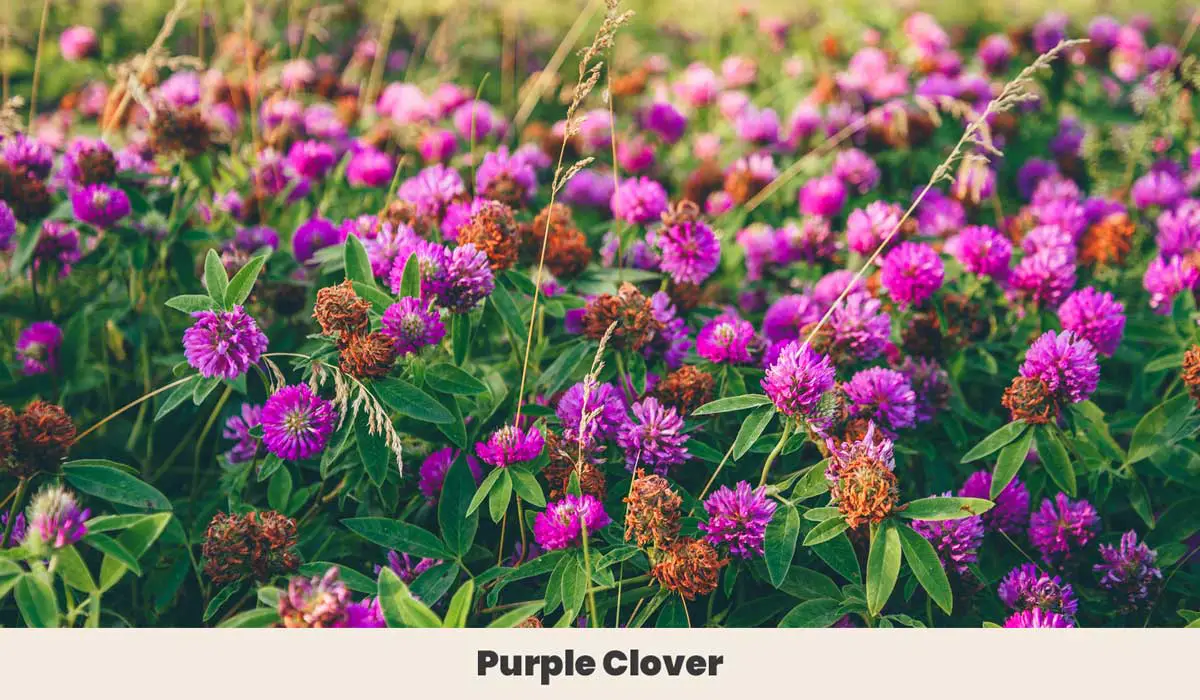
Purple Clover (Dalea purpurea) is a perennial plant species native to the central and southwestern United States. It belongs to the legume family and is known for its vibrant purple flowers, which bloom in late spring and summer.
It typically grows in open, sunny areas such as prairies, meadows, and along roadsides. Purple Clover is an important plant for pollinators and provides a food source for grazing animals such as deer and cattle.
| Botanical Name: | Dalea purpurea |
| Growth Rate: | Moderate |
| Native Range: | North America, United States and Mexico |
| Hardiness Zones: | 4-9 |
| Exposure: | Full sun exposure |
| Soil Needs: | Well-drained soil |
| Tolerate: | Drought, heat tolerant |
| Water needs: | Low |
Final Thoughts
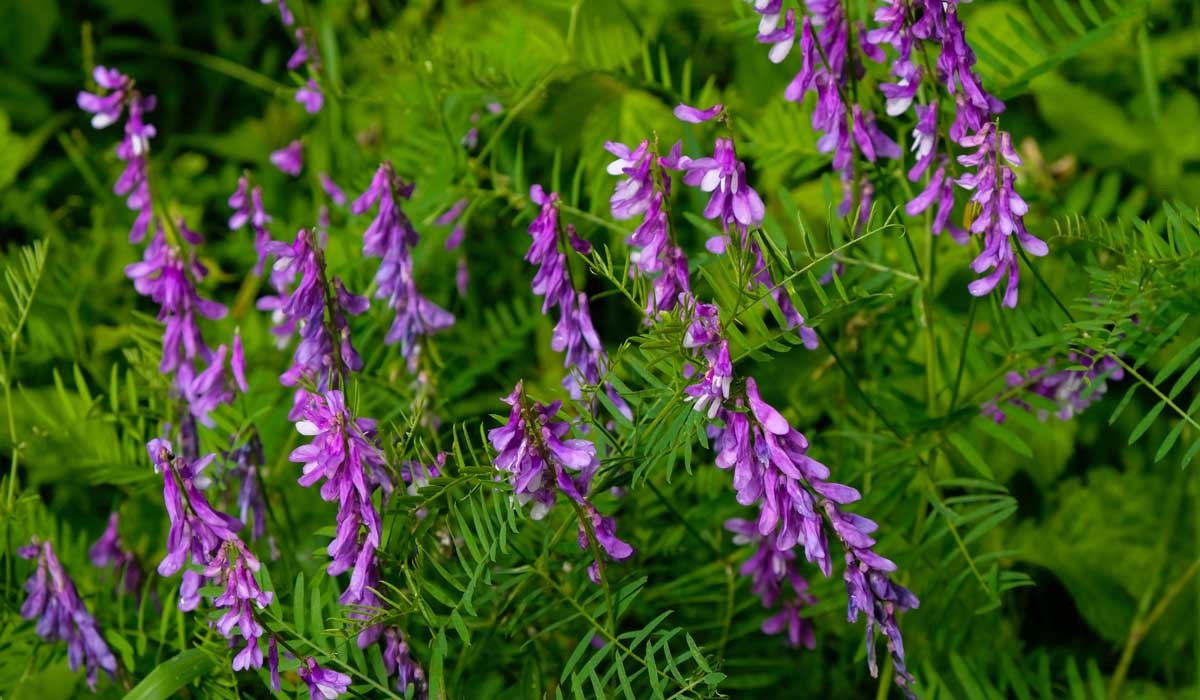
While some may consider weeds with purple flowers as a nuisance in their lawns, it’s important to appreciate the beauty of these plants and understand their ecological significance. From the vibrant purple hues of the Henbit plant to the delicate flowers of the ground ivy, each of these 11 common lawn weeds has its unique characteristics and benefits.
By taking the time to identify and appreciate these plants, we can develop a greater understanding and appreciation for the natural world around us.

Before you go!
From Boring to Breathtaking: Discover the Top Flowers to Pair with Carnations!
11 Stunning Red Perennial Flowers That Bloom All Summer + Growing Guides
11 Full-Sun Flowering Ground Covers That Will Creep Across Your Garden
12 Star-Shaped Flowers | Blooming Stars for Every Garden